Action area 1: Low-Energy Districts
Passive refurbishment in the residential sector by Barcelona Municipality
One of the refurbishment measures implemented by the Municipality of Barcelona within the scope of the GrowSmarter project is being carried out in the residential building of Passeig Santa Coloma 55-71. This building is composed of 207 dwellings with a total surface of 14,165m2, which will benefit from retrofitting to improve energy efficiency and comfort.
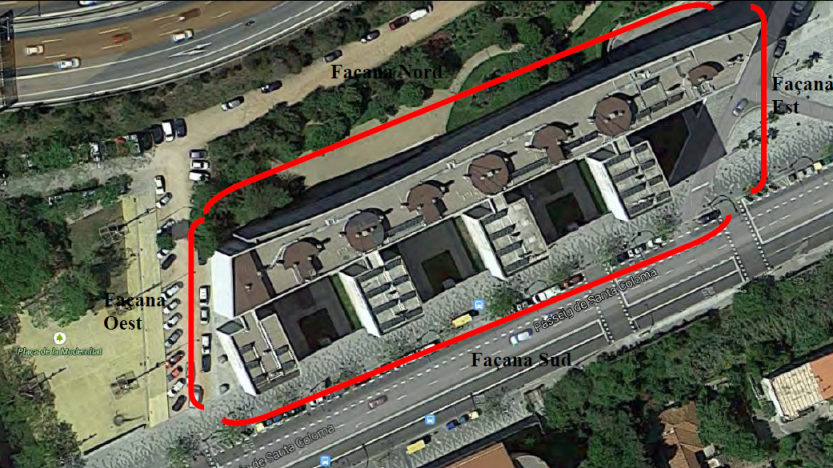
The work will include the passive refurbishment of the entire building façade. This refurbishment involves the addition of external insulation on the North, East and West façades, as well as in the South façades that are not protected by a terrace, together with treatment of thermal bridges. Both EPS and wool insulation will be used, the former being applied on ventilated façades and the latter on the rest of façades. Insulation on each façade has been optimized in order to protect indoor spaces from weather conditions depending on the orientation and irradiation received. The benefits of passive refurbishment will be assessed by means of thermal imaging before and after the refurbishment.
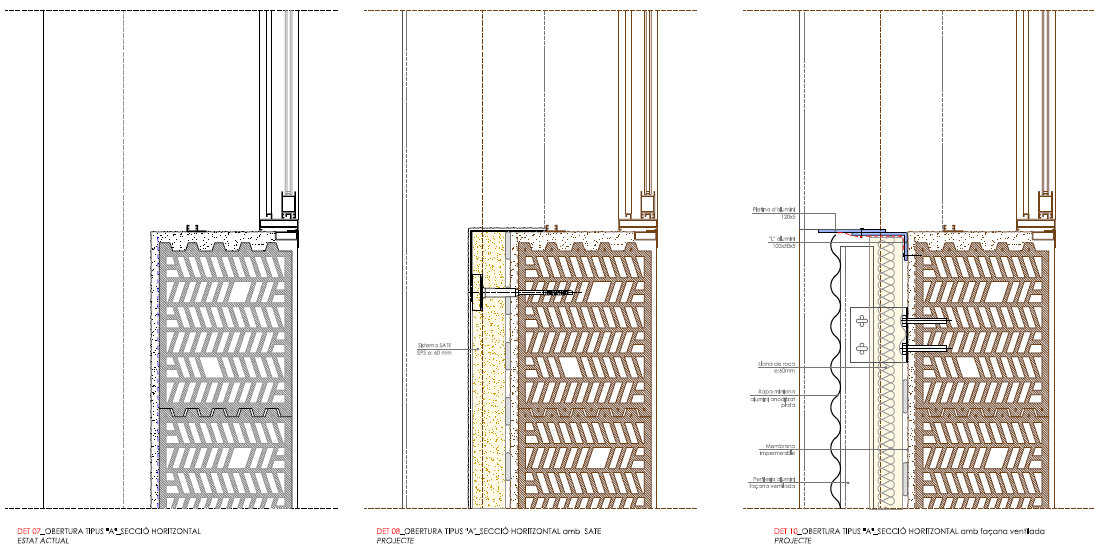
This insulation technique is expected to lead to a reduction of the heating demand of the dwellings by approximately 43% due to the improved airtightness. The blinds of all the windows in the building will also be upgraded.
According to the calculations on energy savings prior to the refurbishment, the baseline total primary energy consumption of the building is 100.88 kWh/m2, while the same figure for the refurbished building is expected to be 53.36 kWh/m2. The fuel for space heating in this residential building is natural gas, so any reduction in space heating demand directly leads to a reduction in greenhouse gas emissions.
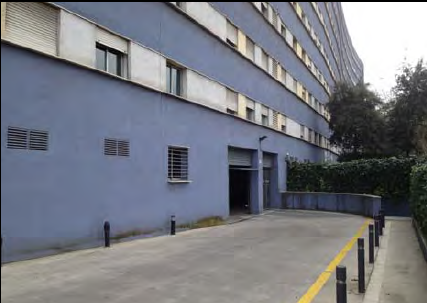
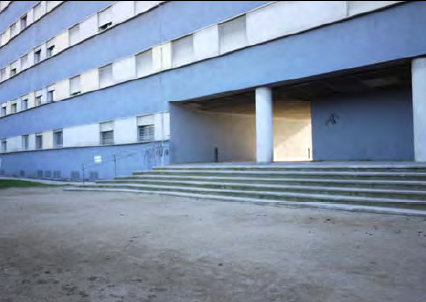
The benefits for the tenants will not only be the impact in their heating energy bills, but also improved comfort and other quality aspects of the building, such as noise and humidity insulation.
In order to monitor the impact of the refurbishment on the building’s energy consumption, 4 of the dwellings will be monitored to collect data from electricity and natural gas consumption of the apartments once the façade retrofitting is completed. In addition, the Municipality of Barcelona has also implemented a monitoring system for the existing 13 domestic hot water installations fed by a solar thermal system on the rooftop of the building. Finally, the assessment of comfort conditions will also be carried out in several dwellings by measuring the indoor temperatures, humidity and CO2 concentrations. This experimental assessment will be carried out by means of a survey to the tenants.
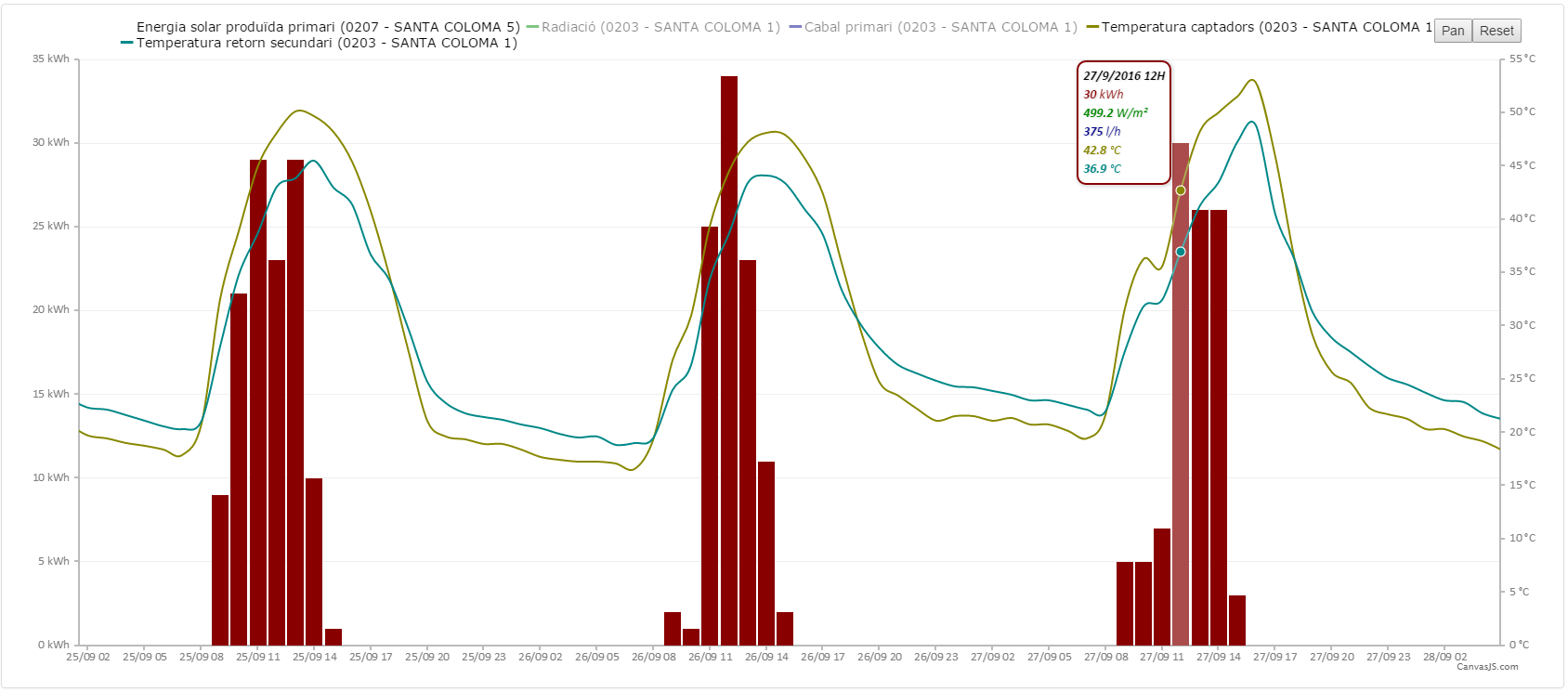
All the refurbishments in the residential building of Passeig Santa Coloma 55-71 are being promoted by the public body responsible for social housing in Barcelona, Patronat Municipal de l’Habitatge de Barcelona - PMHB.
Action area 2: Integrated infrastructures
To see all the measures to be implemented, click here.
Using semantic data integration to process city data
Cities and their citizens are producers of large amounts of diverse data. Diversity of many data sources is in fact one of the biggest issues in big data processing. Semantic data integration offers unique advantages as opposed to more traditional approaches, such as ETL (Extract, Transfer, Load), which create bottlenecks for data access and doesn´t scale as well as technologies that consume data directly without moving it around. It´s worth mentioning that semantic technologies and linked data are not a competitor for the role that databases play; they complement database technology to allow ad-hoc exploration and the integration of semi-structured and unstructured data (temporal, spatial, network, etc) that can be sparse and can hide implicit information. They model an open world in which data and metadata can evolve naturally and new implicit relationships may be discovered based on explicitly defined relations and constraints. Semantic technologies are about capturing variable, dynamic, linked schemas, regardless of where or how the actual data is stored.
Integrating Barcelona’s data sources
Barcelona´s big data integration solution is based on such a semantic approach. The idea is to provide a modelling layer (8.2) that reflects the concepts and relationships for the domains addressed in the GrowSmarter project (energy, mobility, and integrated structures), and to access the data instances through this model rather than directly. This makes it easier to integrate further data, as well as to explore and query it without having to understand what the real structure of the database is. It is also a powerful tool for quick data integration and access, which could be useful when porting it to a new city with different data.
A number of components must be in place to successfully deliver on this promise, as shown in the figure below:

The user should have access to the ontology exploration and query tool that enables him to find concepts of interest in the model via a local search starting from anchor entities identified by the tool. In addition, the user must be able to intuitively construct queries without having to learn the query language (SPARQL). In our implementation, queries are constructed visually and are translated into calls to the GrowSmarter Data Platform (Semantic Layer in 8.2). This process relies on the crucial step of retrieving the mappings between the data storage schema and the ontology concepts (8.3). It is a semi-automatic collaborative tool in which the domain experts must select from the recommended mapping those that best reflect reality. Once the API calls return results, these will be combined into a unique result and returned to the user or the application that formulated the semantic query.
We have finished the development of the energy ontology starting from the T.U. Wien ERO ontology and adjusting it in close collaboration with our energy domain experts, IREC (Barcelona). We are in the process of developing the mobility (and contamination) ontology. We have implemented the mapping tool based on LogMap from Oxford University, and we are in the process of hooking it up to a tool that facilitates visualizing the recommended mappings. The last implementation step will involve connecting the semantic queries to the GrowSmarter Data Platform and computing and displaying the final results on the city map.
Transferring results to other cities
The intention is to make this approach available to applications that work with data from the City of Barcelona, and to then select a subset of them - in collaboration with our partners from Köln and Stockholm - that could be ported to work with data from these cities. This can be a first step in demonstrating the viability and advantages of a semantic approach, and of our toolset, for data integration and seamless application access to different sets of city data.



